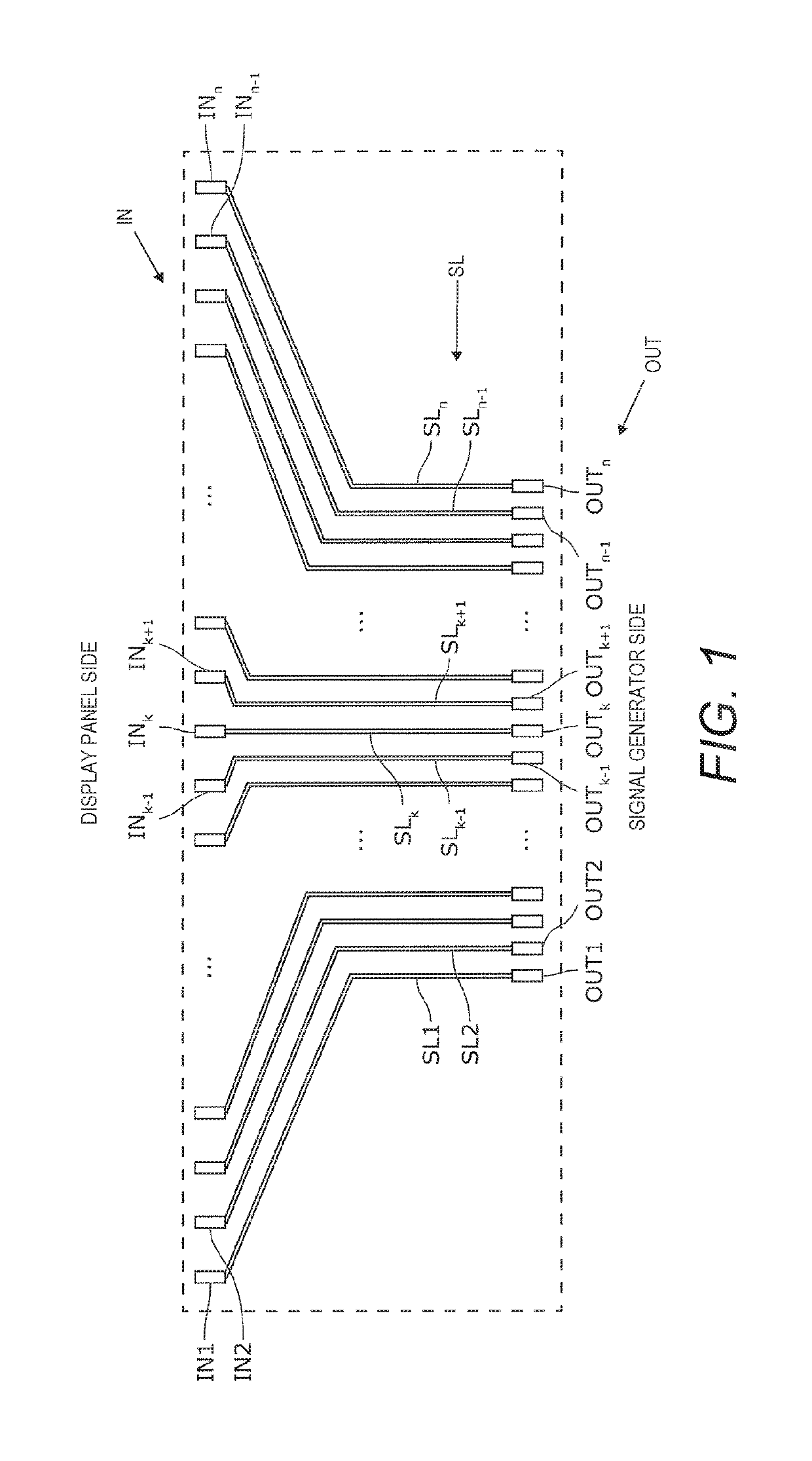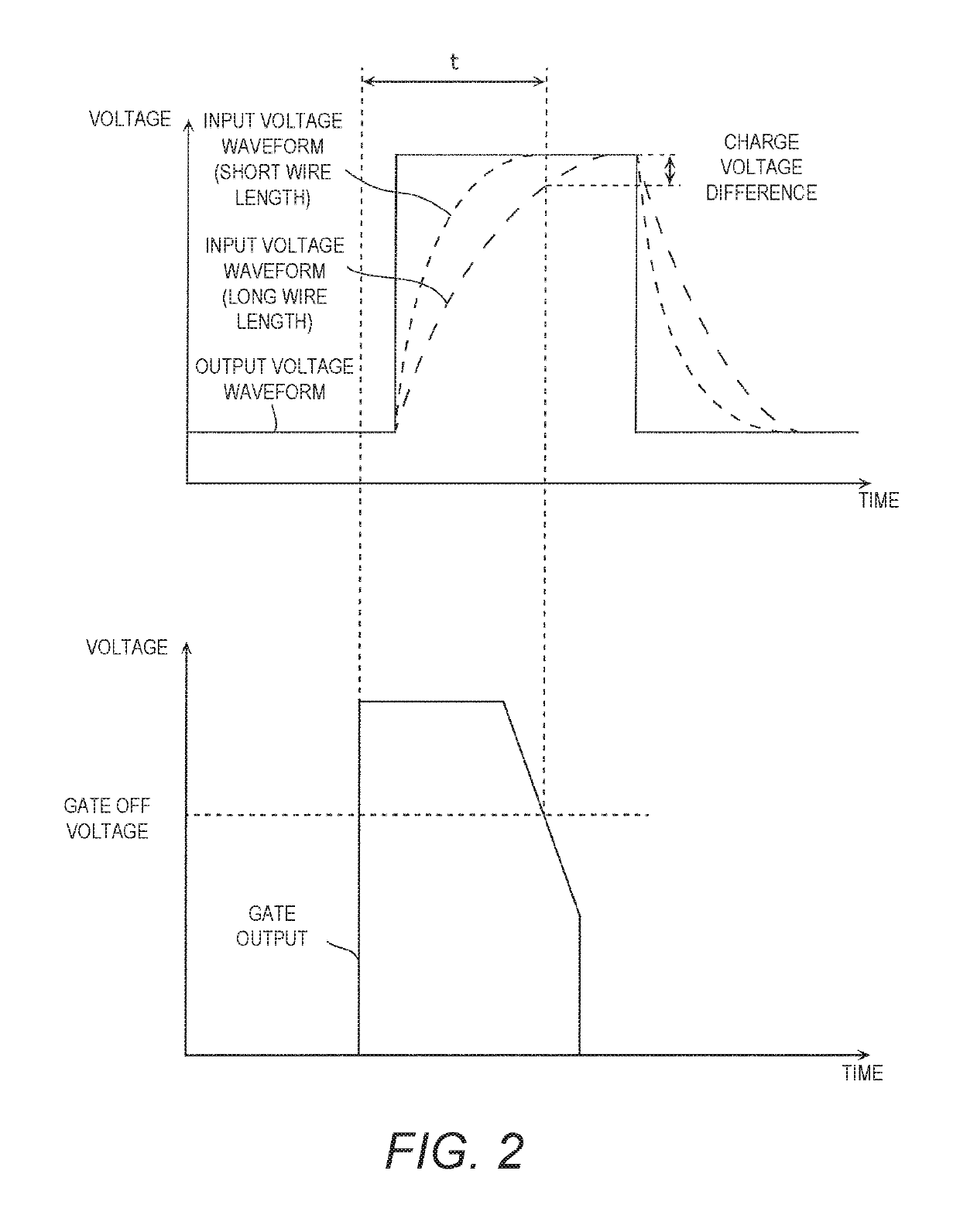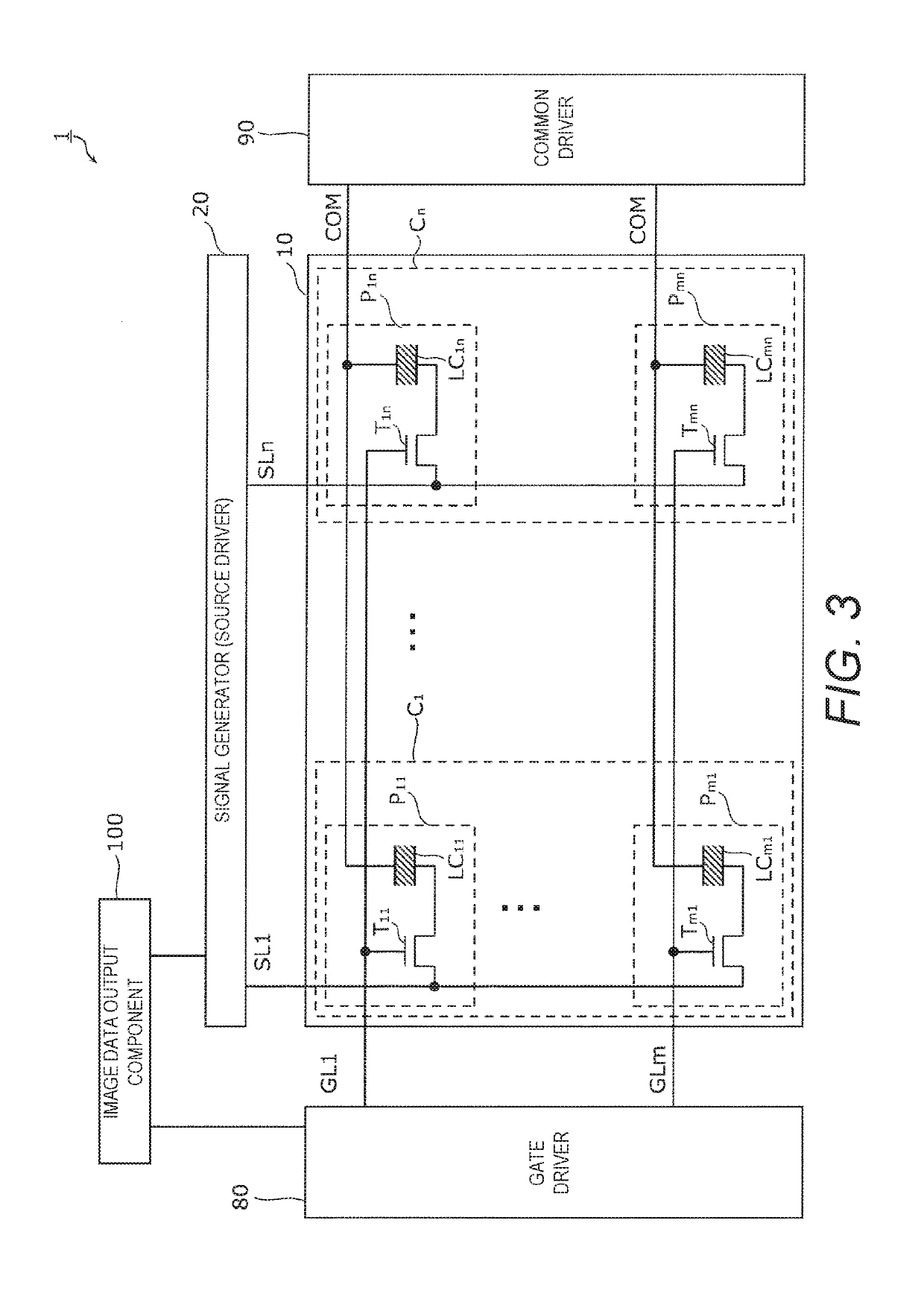Liquid crystal display device
a display device and liquid crystal technology, applied in semiconductor devices, instruments, horology, etc., can solve the problems of long wires, shortening the wires, and increasing the so as to reduce the required number of source drivers, increase resistance, and improve brightness and chromaticity.
- Summary
- Abstract
- Description
- Claims
- Application Information
AI Technical Summary
Benefits of technology
Problems solved by technology
Method used
Image
Examples
first embodiment
[0035]A liquid crystal display device 1 in accordance with a first embodiment will be described through reference to FIGS. 1 to 8. FIG. 1 is a schematic diagram of a plurality of wires SL that spread out in a fan shape and connect a display panel 10 and a signal generator 20 of the liquid crystal display device 1.
[0036]As shown in FIG. 1, the wires (source lines) SL connect the output ends OUT (such as output terminals) of the signal generator (source driver) 20 to the input ends IN (such as input terminals) corresponding to a plurality of pixels Pij (i=1 to m, j=1 to n) (see FIG. 3) of the display panel 10. The signal generator 20 supplies data signals to the pixels Pij of the display panel 10 through the wires SL. Herein, the output ends OUT of the signal generator 20 will also be called simply output ends OUT, and the input ends IN corresponding to the pixels Pij will also be called simply input ends IN. In general, the pitch of the input ends IN is greater than the pitch of the ...
second embodiment
[0093]Referring now to FIGS. 9 to 13B, a liquid crystal display device 1 in accordance with a second embodiment will now be explained. In view of the similarity between the first and second embodiments, the parts of the second embodiment that are identical to the parts of the first embodiment will be given the same reference numerals as the parts of the first embodiment. Moreover, the descriptions of the parts of the second embodiment that are identical to the parts of the first embodiment may be omitted for the sake of brevity.
[0094]With the above-mentioned liquid crystal display device 1 in accordance with the first embodiment, the low-pass filters, the buffers, or other such current controllers 31 reduce variance in the input voltage waveform at the input ends IN. The current controllers 31 are built into the signal generator 20 and are connected to the output ends OUT. In particular, the current controllers 31 are prepared for a particular display panel 10 in which the lengths o...
third embodiment
[0125]Referring now to FIGS. 14 to 18B, a liquid crystal display device 1 in accordance with a third embodiment will now be explained. In view of the similarity between the first to third embodiments, the parts of the third embodiment that are identical to the parts of the first and second embodiments will be given the same reference numerals as the parts of the first and second embodiments. Moreover, the descriptions of the parts of the third embodiment that are identical to the parts of the first and second embodiments may be omitted for the sake of brevity.
[0126]The liquid crystal display device 1 in accordance with the third embodiment is basically identical to the liquid crystal display device 1 in accordance with the first embodiment, except that the liquid crystal display device 1 in accordance with the third embodiment it includes a signal generator 20b instead of the signal generator 20, and a controller 40 on the outside of the signal generator 20b, for example. The rest o...
PUM
| Property | Measurement | Unit |
|---|---|---|
| resistance | aaaaa | aaaaa |
| wire resistance | aaaaa | aaaaa |
| voltage | aaaaa | aaaaa |
Abstract
Description
Claims
Application Information
 Login to View More
Login to View More - R&D
- Intellectual Property
- Life Sciences
- Materials
- Tech Scout
- Unparalleled Data Quality
- Higher Quality Content
- 60% Fewer Hallucinations
Browse by: Latest US Patents, China's latest patents, Technical Efficacy Thesaurus, Application Domain, Technology Topic, Popular Technical Reports.
© 2025 PatSnap. All rights reserved.Legal|Privacy policy|Modern Slavery Act Transparency Statement|Sitemap|About US| Contact US: help@patsnap.com



